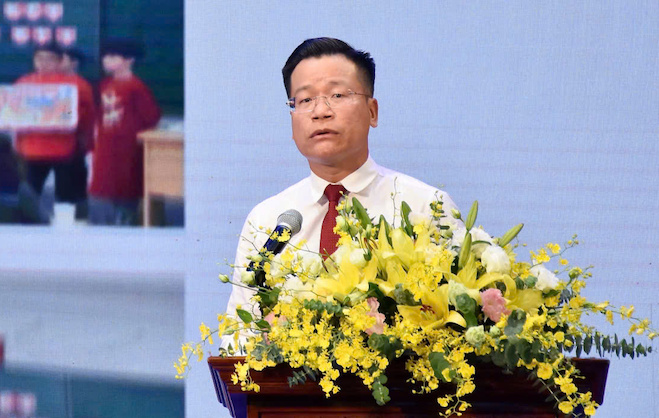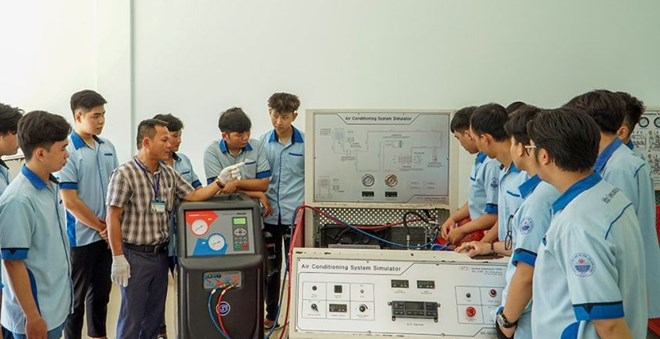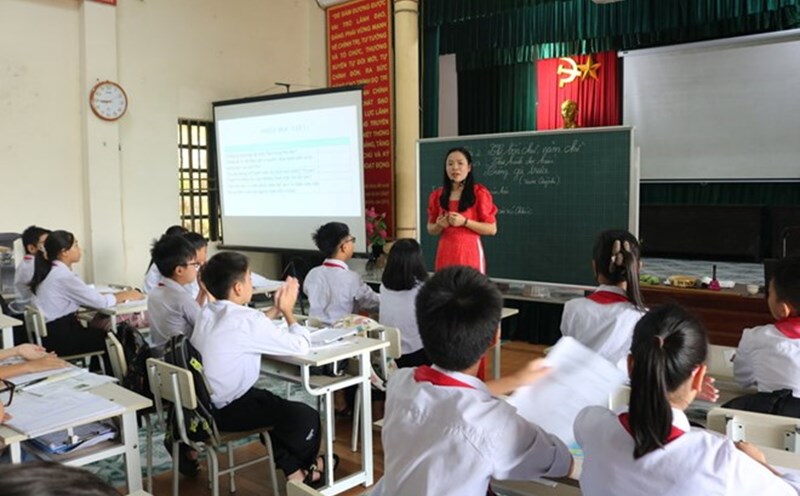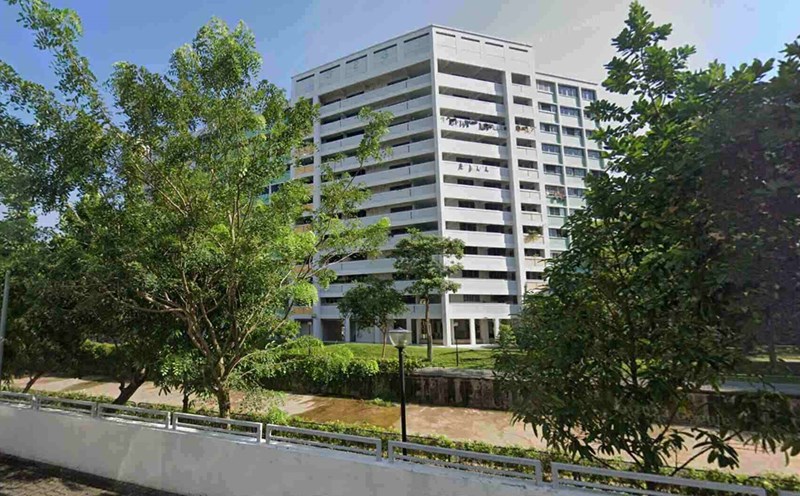The Ministry of Home Affairs sent an official dispatch to provinces and cities, clarifying the arrangement of public service units in the fields of education and health. Accordingly, vocational education and continuing education centers will be merged into vocational secondary schools equivalent to high school level, under the Department of Education and Training, serving in inter-commune and ward areas. Each province and city has a maximum of three vocational schools, not including autonomous institutions with regular expenditures.
Lao Dong Newspaper had a conversation with Dr. Le Duc Thuan - an education expert on this issue.
He assessed the significance of the above policy and how does it affect the education and training sector?
- This is a policy in line with the spirit of Resolution 19-NQ/TW on continuing to innovate the organization and management system, improving the quality and efficiency of public service units. The meaning and impact of this policy can be seen in many aspects:
Firstly, in terms of state management, this is an effective solution to streamline the apparatus, optimize resources, and help overcome the situation of scattered andunished investment for too many small-scale units with low operational efficiency. Resources (both in terms of budget, facilities and quality teaching staff) will be focused on investment in a key way, forming large-scale vocational secondary schools with enough strength for development.

Second, in terms of training quality, the merger will create more professional vocational schools. With a large scale, new schools have the conditions to build a systematic, in-depth training program, updating technology and closely following the practical needs of the labor market. This directly improves the quality of students' skills, helping them have better job opportunities after graduation.
Third, and also the most important, this policy will have a strong impact on the diversion of students after secondary school. The " Vocational High School" model under the Department of Education and Training will create an attractive, clear and highly interconnected learning path. Students and parents will consider vocational training as a serious choice, a practical direction to start a career, instead of having only one path: high school and then university. This helps to significantly reduce pressure on the general education system and better meet the diverse human needs of society.

However, in addition to those positive impacts, we also have to look at the initial challenges. The merger will certainly cause certain psychological and ideological disruptions for the staff, teachers and students. The rearrangement of personnel, handling of assets and facilities is also a complicated problem, requiring careful, public and transparent implementation to avoid waste and negativity.
In your opinion, what criteria should this adjustment and review be based on to be truly effective instead of simply arranging in a mechanical way?
- This is a key point that determines the success or failure of this policy. If we only merge by mechanical means "combine A with B", we will only create a larger being but the inside is still disjointed and weak.
To make the arrangement truly effective, localities need to develop projects based on a set of scientific and practical criteria, specifically:
First, the criteria for regional planning and human resource needs. It is necessary to carefully analyze the local socio-economic development strategy and human resource needs of key industries in the next 5-10 years. From there, it is necessary to decide which vocational training will the new school focus on, where to locate to make it most convenient for students to travel in the inter-commune and inter-district areas.
Second, the criteria for capacity and strength are available. It is necessary to carefully survey and evaluate the current situation of the teaching staff, facilities, equipment and the training professions of each unit. The merger should aim at "encouragement of strength", combining centers with complementary professions to create a multi-disciplinary school with clear strengths, instead of combining weak units together.
Third, the criteria for scale and conditions for quality assurance. After establishment, the new school must meet the minimum standards according to the regulations of the Ministry of Education and Training on area, student/class ratio, teacher ratio, practice conditions... This is a mandatory requirement to ensure output quality.
Fourth, the criterion of social consensus. The project development process must be carried out openly and democratically. It is necessary to organize workshops and widely collect opinions from the staff, teachers, experts, businesses and the community to create high consensus, making the implementation process later smooth, avoiding confusion and frustration.
What should the units after the merger do after adjusting, reviewing, and forming a new operating apparatus to quickly stabilize and achieve efficiency in the operation process?
The "posthumous merger" period plays a vital role. A correct merger decision is just the beginning. For the new apparatus to operate effectively, units need to focus on the following 4 key tasks:
Stabilize organization and personnel: This is something that must be done immediately. It is necessary to quickly perfect the leadership apparatus, issue a new organizational diagram, and clearly and transparently reassign tasks to each department and individual. The most important thing is to develop new working regulations and internal spending regulations and thoroughly and reasonably resolve issues on regimes and policies for affected teachers and staff so that they can work with peace of mind.
Building a new school culture: Each previous unit had its own culture. Now, the school's leadership must be the core, leading the construction of a "common home" with a common vision, mission and core values. It is necessary to organize collective activities and joint professional activities so that teams from old units have the opportunity to exchange, understand and unite, together towards a common goal.
Review and unify training programs: This is a core professional task. The school's scientific council needs to immediately review the entire training program from the old units, eliminate duplication and backward content and build a unified, interconnecting, modern training program system closely linked to the needs of businesses.
Planning communication and admission: A new name, a new apparatus needs a new brand. Schools need to build a systematic communication strategy to promote the model, training majors and job opportunities to students, parents and the whole society. Admissions must be innovated to attract students who truly have a desire to learn a trade, thereby affirming the position and reputation of the school.
If the above solutions are implemented synchronously and drastically, I believe that this policy will create a new vitality, contributing to improving the quality of vocational education in a practical and sustainable way.
Thank you!










